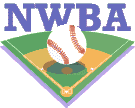| T O P I C R E V I E W |
| Rapid |
Posted - 09/17/2018 : 14:50:00
Todayís social media is abundant with videos of people moving through agility ladders at the speed of light or mindlessly running around cones. But what is that really doing? Is the drill really driving physiological change? Ladder drills absolutely have value and can teach people rhythm and control. Sometimes, though, looks can be deceiving. True performance enhancement is about putting in consistent, appropriately prescribed work with movement efficiency and physiological change as the over arching goal. Here are some of our thoughts on developing athleticism.
The majority of untrained athletes need strength first and foremost. In fact, without appropriate amounts of strength, change of direction and agility can be inefficient and dangerous. (Agility differs from change of direction in the fact that it requires cognition and decision making,. I.e, reading a defender before making a move). Changes in direction require large amounts of strength to decelerate, stabilize joints, deal with ground reaction forces, and to finally move in the desired direction. For example, a young infielder who struggles to get into the position his or her coach wants may lack the ability to decelerate in a timely manner. Picture a young player running down a ground ball, but being unable to stop to plant and throw in a timely manner. This is why itís so important the athlete both understands how to control himself or herself and to have the appropriate level of strength to do so.
It is with these demands in mind that drive exercise selection and training protocols. Here is an example of how we might structure a beginner or young athleteís session:
1. Low level drills that teach position, timing, rhythm, coordination, and bodily awareness. (Marches, Skips, Posture Holds, etc)
2. Drills that emphasize how to land, shuffle, and decelerate. (Stability Jumps, shuffle or jog to freeze, etc)
3. Power/Speed Development (Medicine ball training, sprints, jumps, etc)
4. Strength training (Learning how to squat, deadlift, lunge, etc. is a HUGE ingredient to help people deal with the demands of each sport)
We hope this is helpful! Have a great week, and as always feel free to comment with questions or topic requests!
All the best,
The Rapid Team
www.go-rapid.com
Andrew Gordon, MS, CSCS
Andrew.Gordon@go-rapid.com
|
|
|




